Down Argentina Way...
/If my trip to Brazil ended up focused primarily on convergence culture and transmedia storytelling, the second leg of my trip -- to Buenos Aires -- was much more directed towards my work on new media literacies and issues concerning education. I was invited to Argentina by Ines Dussel, an educator and public intellectual, who is one of the co-authors with Luis Alberto Quevedo of a new white paper exploring the impact of new media on education in Latin America, Educacion y nuevas technologias: los desafios pedagogicos ante el mundo digital. The report was being released at the VI For Latinoamericano de Educacion, hosted by the Fundacion Santilla. It was an event attended by education ministers and educational researchers/policy makers from many of the Latin American countries. I was asked to give a keynote address which shared with the group some of the perspectives on new media literacies, participatory culture, and informal learning we have developed through Project New Media Literacies, including some discussion of the curriculum we have developed around "Reading in a Participatory Culture." A key concern throughout the discussion was the distinction between introducing technology into the classroom and developing the skills which would enable young people of all economic and cultural backgrounds to participate more fully in the emerging media landscape. Ines and her associates have promised me an interview for the blog, which I hope to share with you soon. I ended up using two examples from my family history to illustrate my key points. First, I talked about my father's tool box. My father spent much of his life in and around the construction trade. He was the son of a sheet metal worker. For both of those generations, their tools were vitally important to them, but their knowledge consisted of how to deploy those tools and could not be contained in the tools themselves. If my father sat his tool box on the table and told me to build a house, I wouldn't know what to do. Trust me, we went through this many times when he was alive. I never could think using hand tools. It isn't just that I didn't know how to use the tools well -- how to use a hammer or a saw -- but rather, I lacked the skills needed to use them effectively and I lacked the larger understanding of how a house -- or in my case, a bookcase -- would be put together. I had the tools but I lacked the competencies which would allow me to use them in meaningful ways. I lacked the sense of my own empowerment to take those tools out in the world and construct something with them.
So, we can bring computers into the classroom but unless the tools are accompanied by other kinds of knowledge -- and I don't just mean how to use the keyboard and some basic software -- then they are not going to be able to deploy those tools in meaningful ways. For some of my friends back at MIT, the key knowledge is how to code -- and that's certainly part of what I mean -- but also I think that knowledge involves how to network, how to participate in new structures of culture and knowledge, how to read a Wikipedia page, how to assess the credability of information. And a technically focused curriculum which is not met with the integration of those skills into how we study culture and society will only get us so far in terms of closing the digital divide and the participation gap. That's the heart of the white paper I wrote for MacArthur.
The second story I drew on heavily there had to do with my grandmother, who, among other things, made quilts, growing up in rural Georgia. We might think of quilting as a kind of remix practice. She took bits of cloth left over from other sewing projects, sometimes drawing on the shared reservoirs of the female community, to create new works. In doing so, she was also building on a shared tradition with its own patterns and formulas. And she was producing an artifact which was designed for sharing -- often the quilts were made as gifts to mark social occasions of significance in the life of the community. My grandmother would have known how to engage with a participatory culture.
We can imagine moving from stitching together and remixing textiles to stitching together and remixing media content. Indeed, Francesca Coppa uses the metaphors of "cutting" and "stitching" to talk about the work that goes into producing a fanvid. In the United States, these folk traditions were radically disrupted by the rise of mass production and mass media. Today, quilt making is a specialized skill, more often trained in art schools than passed along from one generation to the next. And the logic of folk production has become disassociated from our understanding of the media.
One of my speculations about digital culture in Latin America is that because it exists alongside a still vibrant folk culture, a new model for thinking about remix may emerge. And this is part of what I am trying to understand through my travels to the region. I don't want to romanticize this possibility since it is also the case that many Latin Americas worry that the web may simply open up another gateway through which North American influences will be felt upon their traditional ways of life, and it is hard talking to people there to dismiss those concerns.
These next two images suggest some of the complex ways that these two ideas -- remix as part of the logic of folk culture and the importation of Northern culture on the south -- interact on a regular basis in Argentina. My brother owes an affinity to the brand community around Coca Cola, living in Atlanta, so I was especially interested to see the many ways that Coke's presence was felt in Buenos Aires. And yet, as cultural theorists might suggest, Coke is localized -- not only by the decisions made in the boardroom but also by the ways it is inserted into a distinctly Argentinian context.
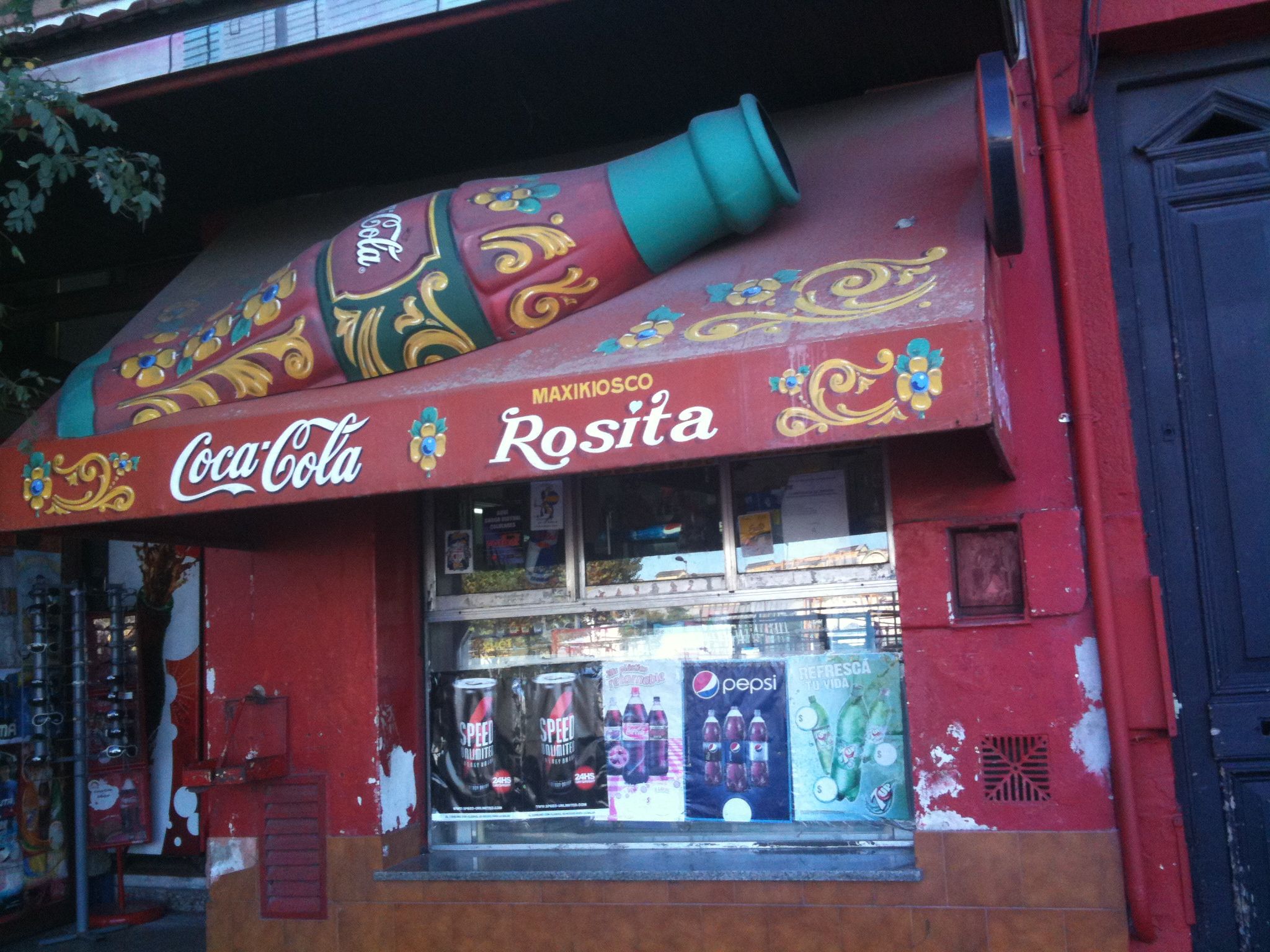
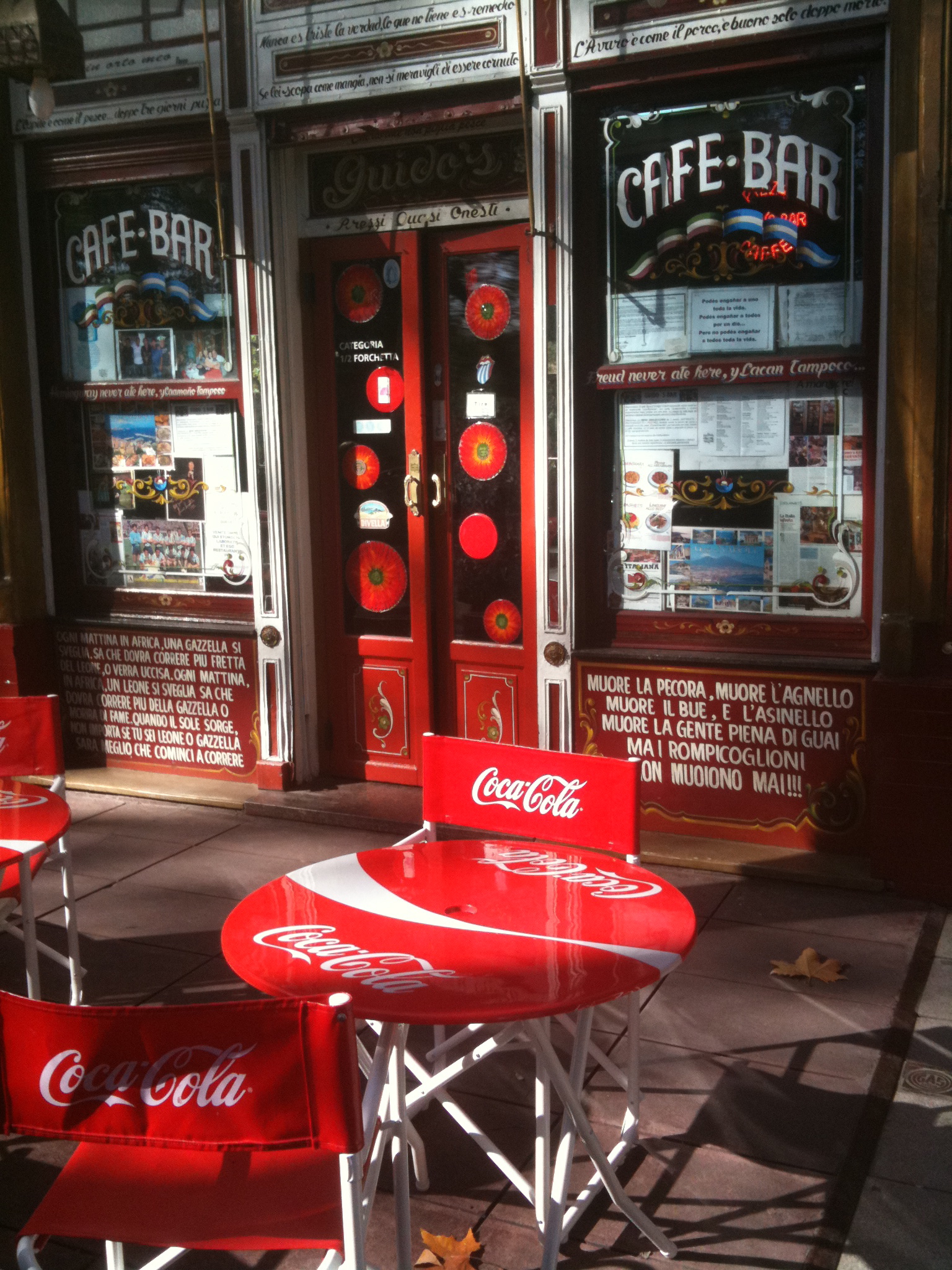
As I traveled around the city, I was struck by the graphic arts of Buenos Aires, the expressive ways that paint -- especially bright primary colors -- was used to transform the urban landscape.
This focus on street art carried over to a strong tradition of murals and graffiti, such as the soccer related image, which also reminds us of how intense the country's connections are to sports fandom.
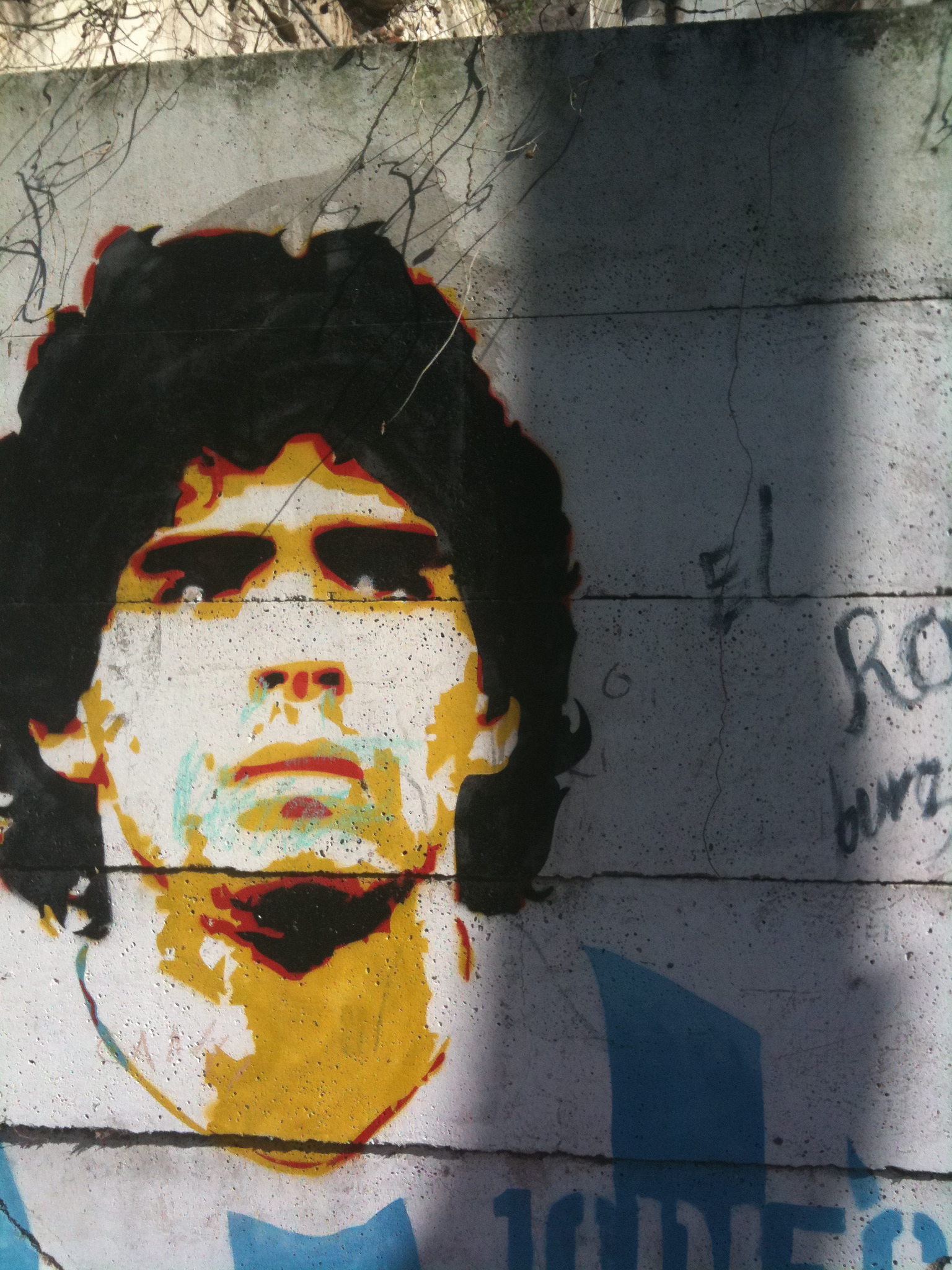
And this pub sign depicts Carlos Gardel, Tango performer who became a key figure in Argentinian cinema of the early sound era. I was introduced to Gardel's music while visiting Argentina, along with a wide array of appropriations and remixes of Tango music as it gets absorbed into jazz, hip hop, and techno/dance musics.
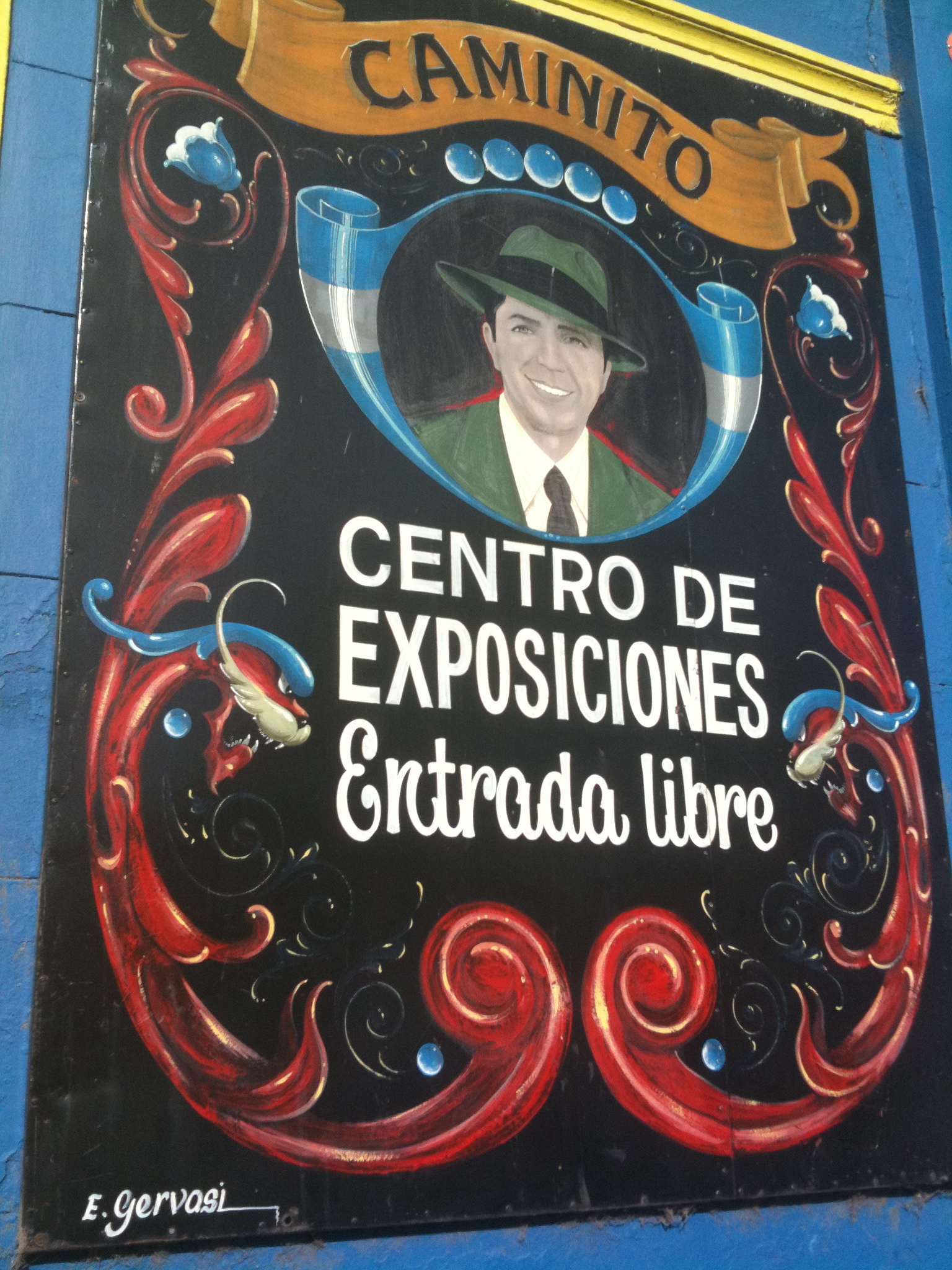
Gardel remains a key figure in Argentinian popular culture -- if you look closely, you will see his image on the wall behind these contemporary street performers who were in their own ways keeping the Tango tradition alive.
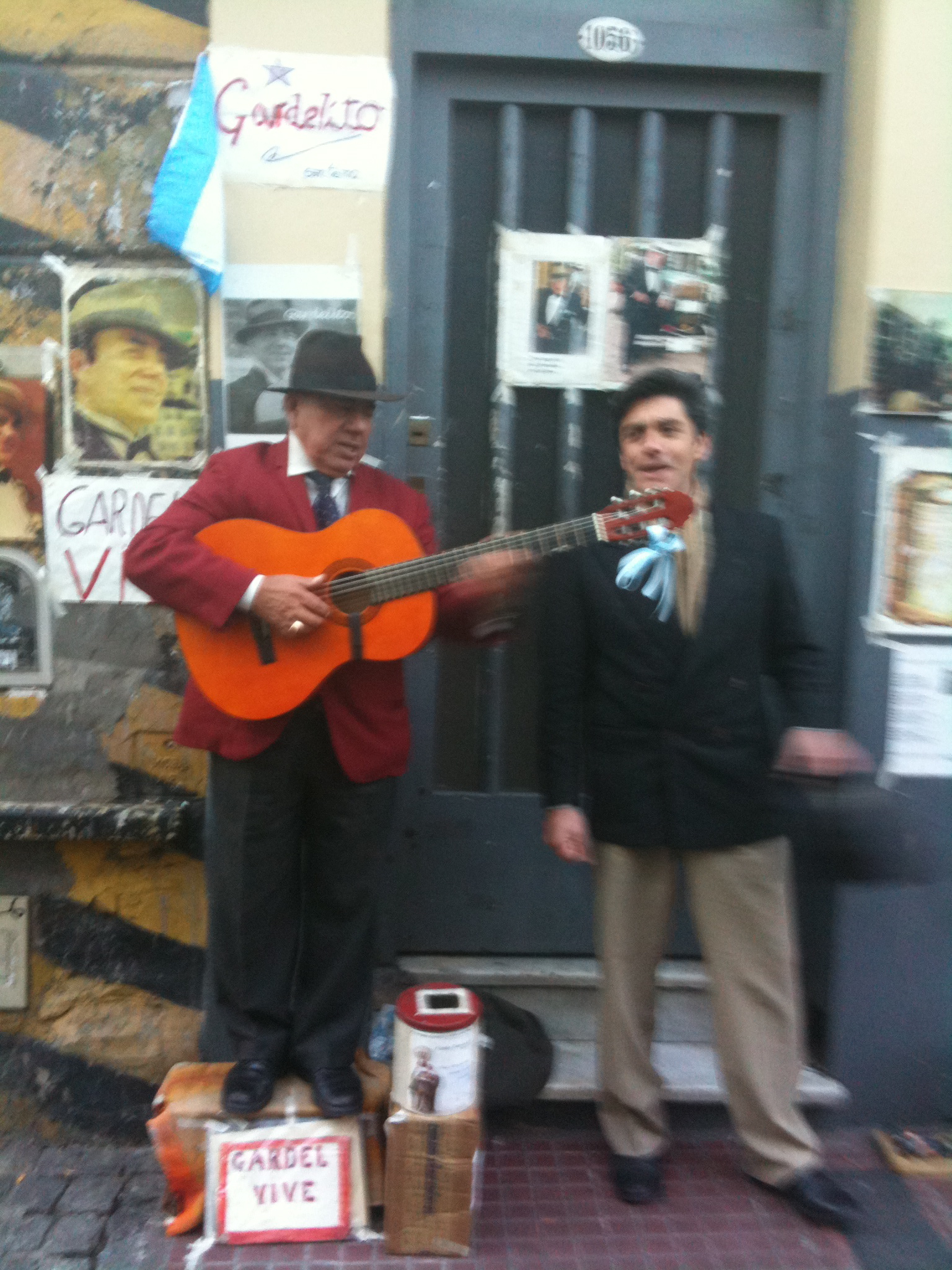
Ines and her husband took me to visit a curio market on Sunday, which is full of cultural debris, some reflecting the local traditions of Argentina, others suggesting the flow of goods and brands from the North. This still life suggests the complex assemblage of objects (and the cultural traditions they embodied) on every table.
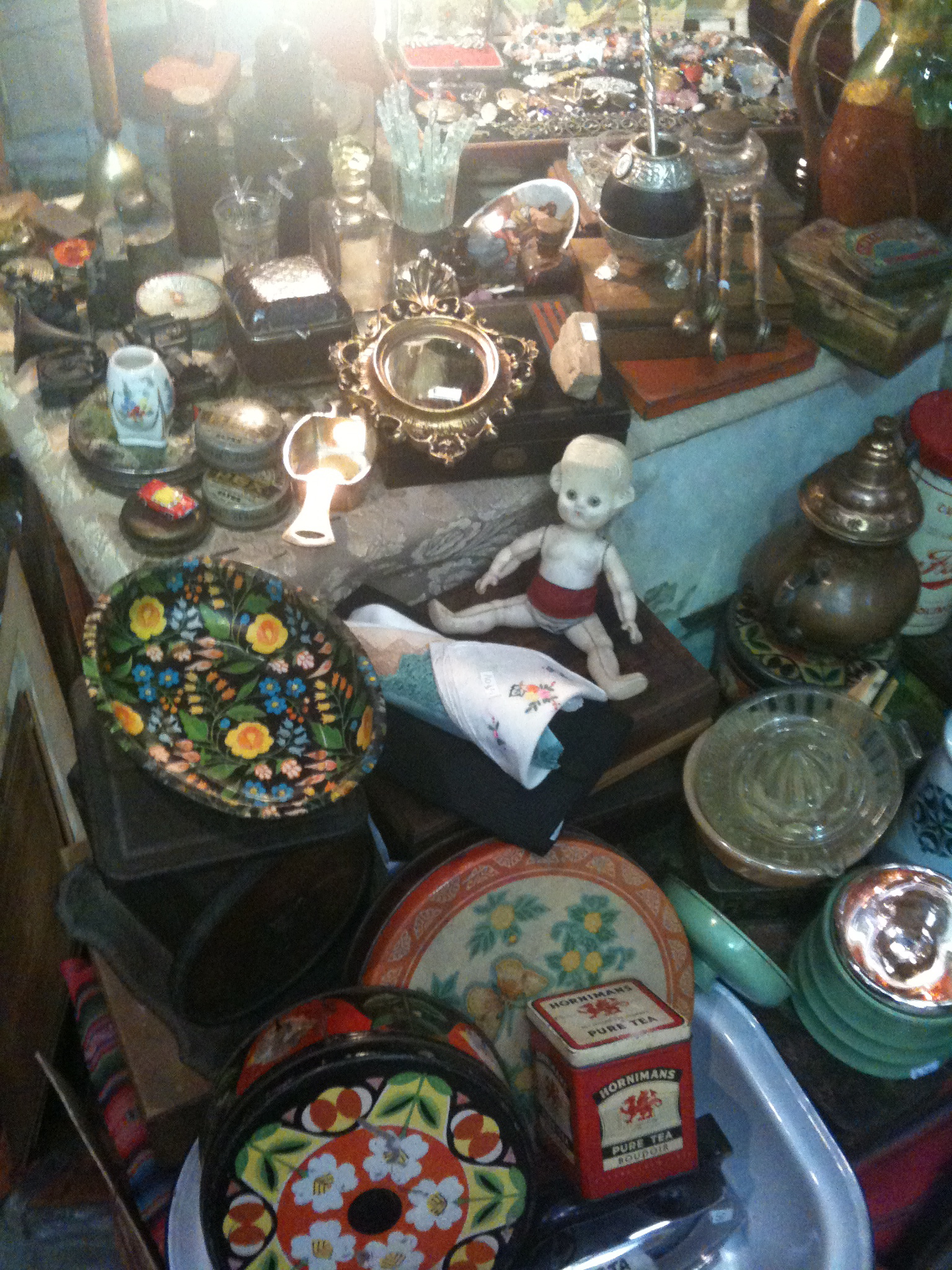
The one thing I was taught about Argentina growing up in American public schools of the 1960s was that it was the land of the Gaucho, so I could not resist capturing this image of a Gaucho selling ropes and bolos in the marketplace. I am sure some of this was performance for tourists, but there was still something fascinating about confronting an icon which previously had lived for me only on the pages of battered and largely forgotten textbooks. Besides, I always loved a song Lupe Velez sings in one of the Wheeler and Woolsey comedies that "You can keep Harpo and Chico. I love my Gaucho."
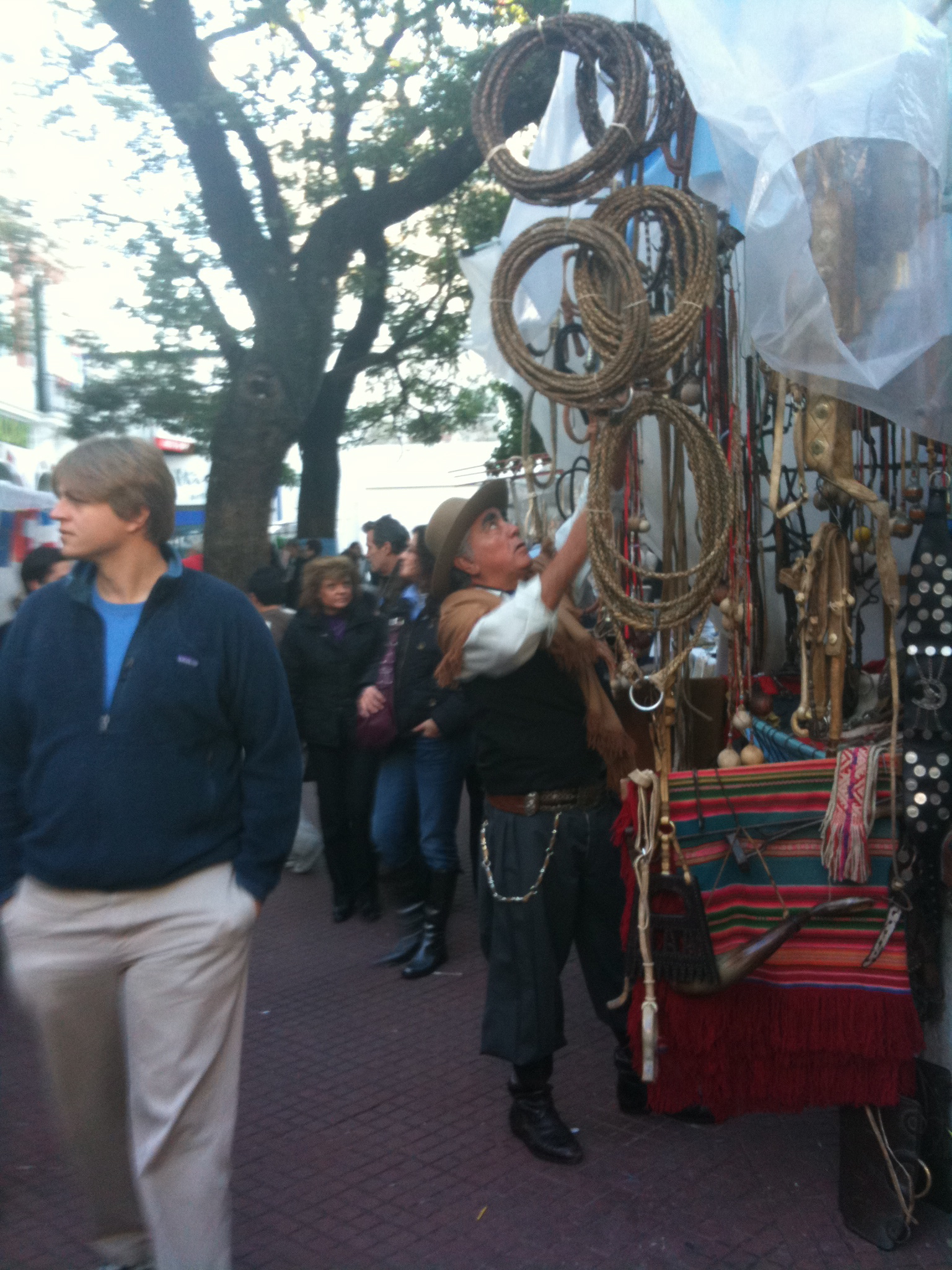
And during this same trip, I was intrigued by these street performers. Like so many living statues, I have seen in the United States, they were frozen in a pose, defying the attempts of visitors to make them move from their static composition. Yet, what amused me here was the attempts to create what seems in still photographs to be a highly dynamic image -- they used a variety of illusions to convey a sense of movement, even as they remained absolutely still.
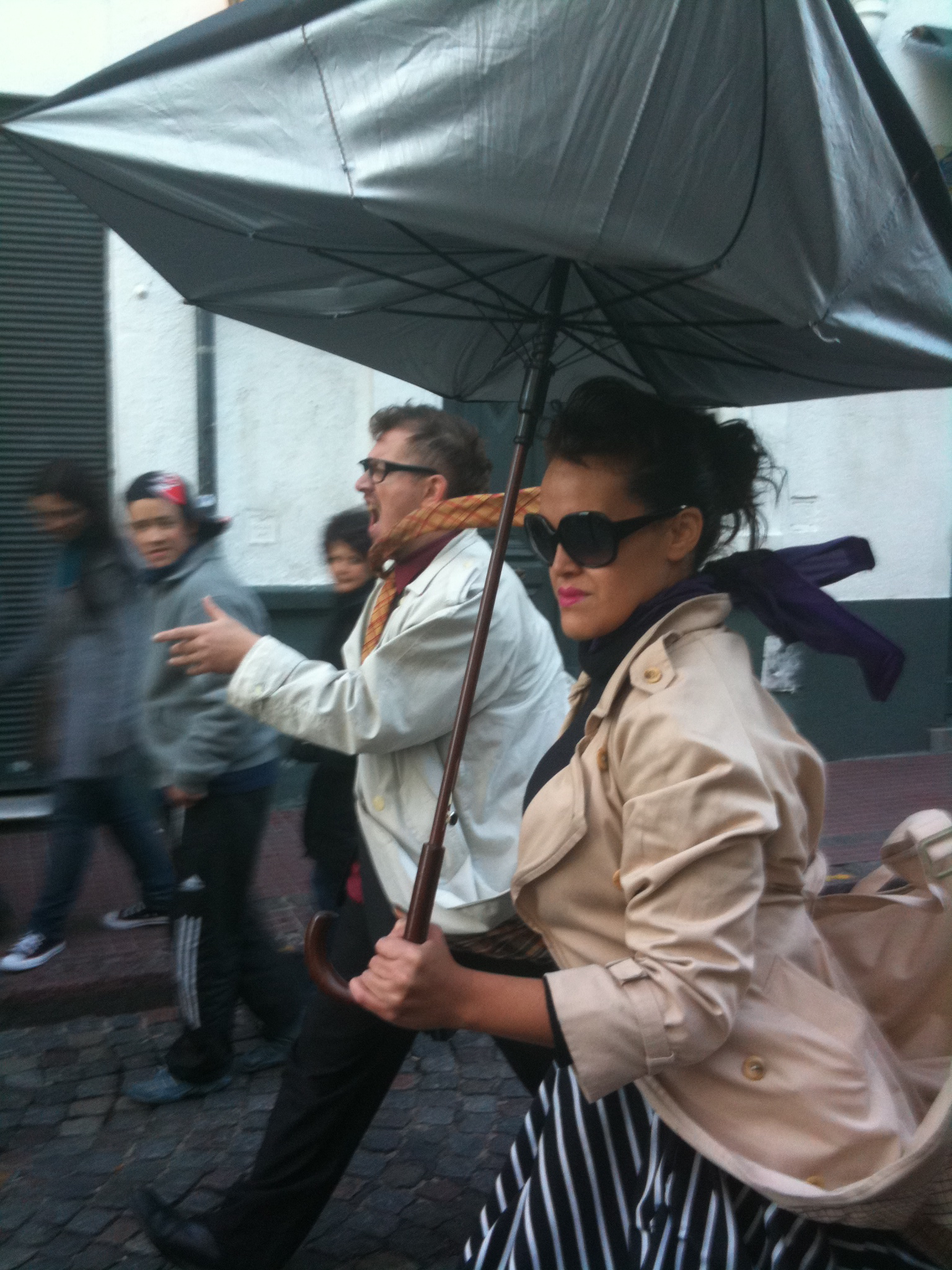
Pardon me for what has devolved into a series of tourist snapshots which fail to capture the complex thoughts and feelings which this trip stirred within me, but part of what I carried away with me was a real affection and fascination for the kinds of folk and popular culture practices I observed in Buenos Aires.


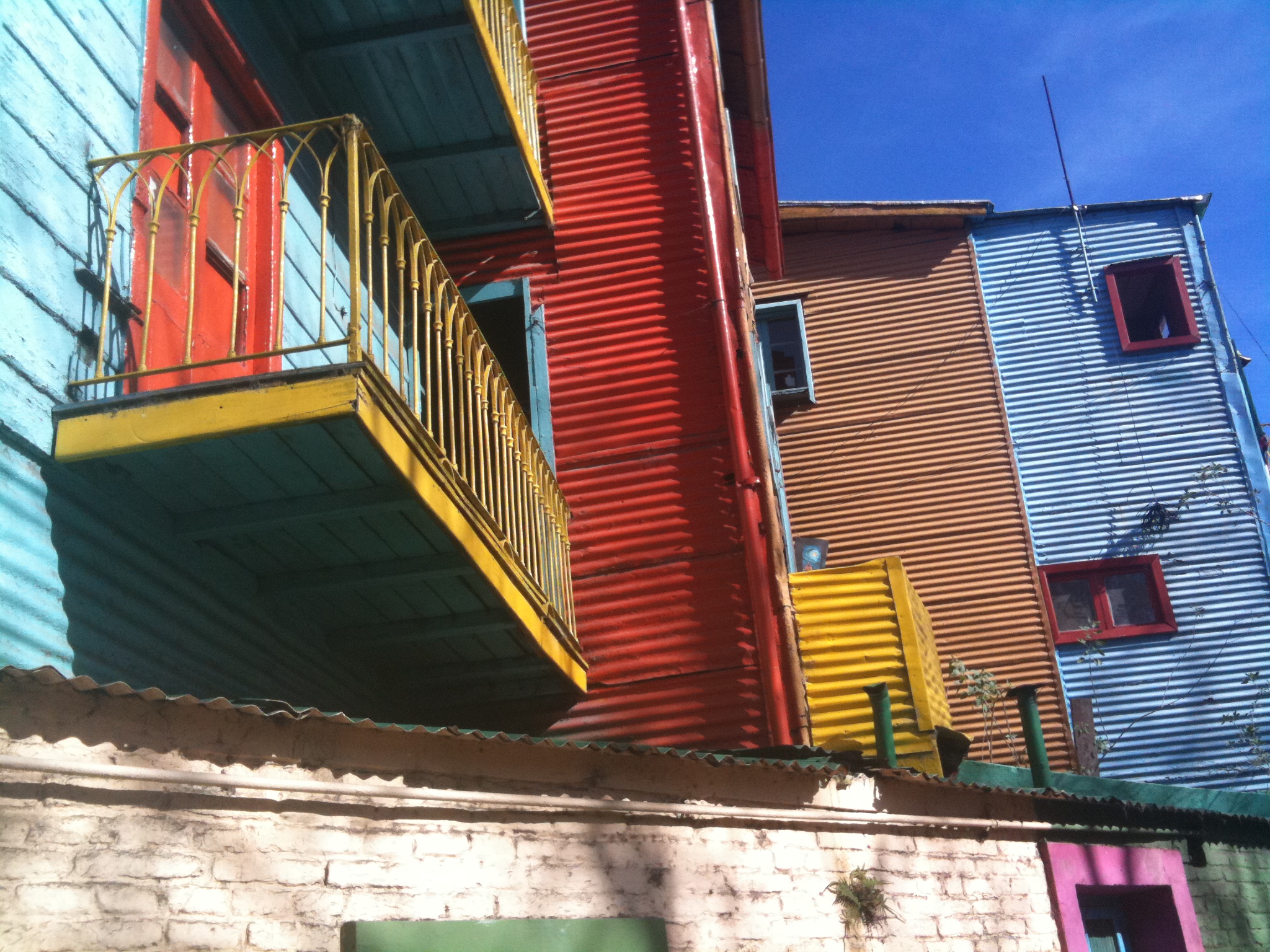
![Reblog this post [with Zemanta]](http://img.zemanta.com/reblog_e.png?x-id=f40d85f8-ffe1-4796-a8e1-d4565f636ac1)